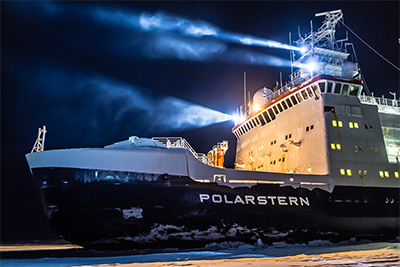Two graduate students from The Ohio State University will get a front row seat for the largest central Arctic science expedition in history.
As a mother, U.S. Coast Guard veteran, former social worker, scuba diver, drone pilot and scholar, Ohio State electrical and computer engineering (ECE) Ph.D. student Brandi Downs still isn’t done finding her path in life. Soon, she can add Arctic pioneer to that list.

|
This September, she joins researchers from across the world as they depart on ships from Norway to drift through the Arctic Ocean ice, studying the top of the Earth in unprecedented detail over the next year.
The expedition is called the Multidisciplinary Drifting Observatory for the Study of Arctic Climate mission, or MOSAiC. A total of 600 people from 17 countries, supplied by other icebreakers and aircraft, will participate – and several times that number of researchers will use the data gathered to take climate and ecosystem research to the next level. The endeavor is spearheaded by the Alfred Wegener Institute, Helmholtz Centre for Polar and Marine Research (AWI).
The National Science Foundation is funding Ohio State’s proposal to participate in two separate six-month legs of the journey.
“Not many people have the chance to live on an icebreaker at or near the North Pole,” Downs said. “Choosing to leave behind my son and husband for those months was a difficult decision to make. But in the end, the once-in-a-lifetime nature of the journey and the cutting-edge science makes it worth the difficulties.”
Her research work at Ohio State is focused on electromagnetics and signal processing for remote sensing and Earth science applications.
Downs and fellow Ph.D. scholar, Oguz Demir, represent the Ohio State team, led by ECE professor and Sustainability Institute affilliated faculty Joel Johnson, whose research at the ElectroScience Laboratory has already tested Earth science instruments over Greenland and successfully launched NASA satellites to study soil moisture, radio frequency interference, weather as well as ice coverage worldwide.
Demir is the first to deploy to the Arctic this fall. He is leading the current day-to-day engineering efforts. Their goal is to operate an ultrawide band radiometer to measure sea ice thickness and salinity.
“This Arctic expedition is going to be a once in a lifetime experience, both personally and professionally. I'm so glad to be a part of it,” Demir said.
